For Sale!
Historic Seattle is selling the Egan House.
Historic Seattle is selling the Egan House.
Each year, Historic Seattle honors outstanding people and projects in preservation at our Annual Preservation Celebration. To do this, we need your help!
We want to hear from our entire preservation community about what preservation projects YOU think are worthy of celebrating. The deadline to submit is Friday, May 10.
Preservation is a Public Benefit
In the past month and a half, preservation supporters in Seattle came together to advocate for maintaining the integrity of the landmark designation process. Since 1973, the City of Seattle has designated approximately 450 landmarks that are subject to protection by the Landmarks Preservation Ordinance (LPO). Ostensibly, the recent controversy revolved around the landmarked Seattle-First National Bank Building (SFNB), located at 566 Denny Way in Uptown, but it became much bigger than that one landmark.
Background
The Seattle-First National Bank Building was designated a Seattle landmark in 2006 under four (out of six) designation standards, a strong statement by the Landmarks Preservation Board (LPB) in recognizing the significance of the building. The exterior and the site were included in the designation. Walgreens purchased the property in 2007 (one year after the designation), adapted the former bank into a retail store, and worked with the Landmarks Preservation Board to reach a Controls and Incentives (C&I) agreement in November 2021 that would apply to the site and exterior of the building. (Controls help to protect a landmark and economic incentives can help an owner maintain a landmark.) The final step in the landmark designation process is City Council approval of the designating ordinance and adoption of the C&I agreement.
Because the SFNB is located in the Uptown neighborhood of Queen Anne, it is eligible as a landmark sending site for Transfer of Development Rights (TDR). This is an important financial incentive that became available for Uptown only in the last few years. The owner can sell TDRs and use the money to maintain the landmark building. A developer who owns a property in Uptown that qualifies as a receiving site can purchase the TDRs to benefit their housing project by increasing FAR (and therefore, additional units). This is a win-win for preservation AND housing. It’s both/and, not either/or.
The Issue
OK, great! So, what was the problem? On December 9, 2022, the City Council’s Neighborhoods, Education, Civil Rights, and Culture Committee met to review Council Bill 120312 (an ordinance relating to historic preservation; imposing controls upon the Seattle-First National Bank Building). At that meeting, four members of the Committee questioned why the Seattle-First National Bank Building was landmarked (they did not believe it was significant), wondered what public benefit the landmark offered, and cited the need for more housing in Uptown, a dense urban neighborhood. Essentially, the Committee believed this landmark was getting in the way of more housing and they wanted to dictate the use on this privately owned property. However, the LPO does not give the LPB nor the Council authority to control use in a landmark building or site. The property is not for sale and there are no redevelopment plans for the site. Uses other than housing are also allowed on the parcel.
The Council Committee recommended to the full City Council that they reject the designating ordinance. We saw this recommendation as a major threat to preservation in Seattle and the City’s preservation program. Removing C&I would leave the landmark vulnerable to demolition and set a bad precedent that could undermine the landmark designation process for any designated landmark that does not have controls and possibly any future designated landmarks.
The Call-to-Action
CB 120312 was scheduled for the January 3, 2023 City Council meeting and then postponed for another week to January 10, 2023. Historic Seattle, the Queen Anne Historical Society, West Seattle-based advocates, the Washington Trust for Historic Preservation, and many individuals jumped into action in December and January to urge Councilmembers to honor the Landmarks Preservation Ordinance and designation process by passing the designating ordinance and adopting controls and incentives for the Seattle-First National Bank Building. A key message was that preservation and housing are not mutually exclusive—this is a false choice. It’s both/and, not either/or. We also supported a compromise that would place no controls on the parking lot north of the landmark building—making it easier for potential development. Council Central Staff provided an analysis of housing development potential on the parcel. It turns out that retaining the landmark could potentially yield more housing units on the site by using a combination of incentives, bonuses, and creative design of new construction. Detractors argued the parking lot is too small for a high-rise. We beg to differ given the many examples of high-rise residential construction on smaller or similar-size lots in this city.
The road to the January 10 City Council meeting was a wild one! There were three amendments to the original bill. The Council realized it could not de-list or “unlandmark” the building so the designation would remain. It is the role of Council to adopt, modify, or reject controls and incentives for a landmark. The Walgreens lawyer suggested to Council that they pass the designating ordinance but remove controls and incentives. So it became the battle of the amendments. Amendment A (proposed by Councilmember Tammy Morales) was to pass the designating ordinance but place no controls and incentives on the building and site (worst-case scenario in our minds). Amendment B (proposed by Councilmember Lisa Herbold) was to pass the designating ordinance and place controls on the exterior of the building and specific character-defining features on the site, but remove controls on the parking lot. Amendment C (proposed by Councilmember Andrew Lewis) supported Amendment B but would also remove the character-defining features on the site, effectively placing controls on the building, the site between the building and Denny Way, and the site between the building and 6th Avenue N. Are you still with us? Crazy, we know!
Historic Seattle supported Amendment B. And ultimately, we supported Amendment C. The result was City Council voted 9-0 for Amendment C which places controls on the landmark building’s exterior and the portion of the site between the building and Denny Way and between the building and 6th Avenue North.
Ultimately, Historic Seattle is happy with the outcome because City Council’s unanimous vote confirmed the longstanding landmark designation process. The Council’s role is not to “rubber stamp” but to confirm and respect the process. Historic preservation is a public benefit in and of itself and should not be pitted against other public policies. Only 0.5% of parcels in Seattle are designated landmarks or in historic districts. That is a minuscule amount in the grand scheme of the built environment.
A big thank you to all who contacted City Councilmembers advocating for the preservation of this modern landmark and for respecting the designation process. Every communication in support was important. Your voices were heard! Council President Debora Juarez’s recent weekly newsletter shows that Council received 124 letters in support of CB 120312 and the compromise amendments and 32 letters in opposition—four times more in support! Finally, we thank City Council for its final decision and particularly Councilmembers Herbold and Lewis for seeking a compromise solution that supports preservation of the landmark and maximizes housing potential.
Learn more:
Materials related to CB 120312
Feliks Banel, KIRO Newsradio, “Preservation groups: Seattle City Council making mistake with historic bank.” Click here to read or listen to this story!
Emma Hinchliffe, Daily Journal of Commerce, “Compromise reached in debate over future of landmarked Uptown bank building.”
We need YOU to urge City Council to vote in favor of Amendment B, a pro-housing and pro-preservation resolution, to the Controls & Incentives (C&Is) agreement for the Seattle-First National Bank (SFNB)* building at tomorrow’s January 10 Council Meeting at 2:00 PM!
Click here to read all supporting documents for the SFNB bill (CB 120312), including Proposed Amendment B. Sponsored by Councilmember Lisa Herbold, the amendment aims to meet demands from Council for housing development on the site while protecting and preserving the designated landmark by adopting C&Is for the building only:
“This amendment would remove the surface parking area on the north side of the Seattle-First National Bank building from the designated features of the landmark. Development would be permitted on the parking area, but controls and incentives would continue to apply to the building on the site, the sign post, the drive-through area, and landscaping between the building and the street.”
NOW is the time to Tell the Council that a vote in favor of Amendment B honors the Landmarks ordinance and process by adopting C&Is for the Seattle-First National Bank building and maximizes housing development on the parking lot:
Questions? Contact Eugenia Woo, Historic Seattle’s Director of Preservation Services, at eugeniaw@historicseattle.org.
*ICYMI: The Seattle-First National Bank Building (SFNB), located at 566 Denny Way in Uptown was designated a Seattle landmark in 2006. Walgreens purchased it after the designation, adapted the former bank into a retail store, and worked with the Landmarks Preservation Board (LPB) to reach a Controls and Incentives (C&I) agreement (in November 2021) that would apply to the site and exterior of the building. The last step in the landmark designation process is City Council approval of the C&I agreement, but some members of City Council seem to believe that preservation and housing are mutually exclusive. This is a false choice. It’s both/and; not either/or.
If this amendment to the C&I agreement is not adopted, the landmark will be vulnerable to demolition, setting a dangerous precedent for ALL future and current Seattle Landmarks without controls and disregarding a tried and true program (Transfer Development Rights) that allows preservation to be an asset in creating more housing within Seattle.
Feliks Banel with KIRO Newsradio has got it exactly right: Seattle City Council is making a mistake with the Seattle First National Bank Building (SFNB). Click here to read or listen to this story!
Having postponed the full council vote until Tuesday, January 10, City Council is still threatening Seattle’s robust landmarking process by not adopting already agreed upon Controls and Incentives (C&Is) for the SFNB. Instead, they may adopt an amendment, written up by the lawyers hired by Walgreens, to eliminate all controls and incentives. Some members of City Council seem to believe that preservation and housing are mutually exclusive. This is a false choice. It’s both/and; not either/or.
With the full council vote already delayed until January 10, NOW is the time to make your voice heard! Join us in telling the Council that denying C&Is for the SNFB:
A) sets a dangerous precedent for ALL future and current Seattle Landmarks without controls,
B) disregards a tried and true program (Transfer Development Rights) that allows preservation to be an asset in creating more housing within Seattle,
C) and insults our and your belief that preservation enriches the lives of all in Seattle.
AND, demand that City Council honor the Landmarks ordinance and process by adopting controls and incentives for the Seattle-First National Bank building.
Click here to review the 1/10/23 City Council Meeting Agenda, which includes three options to provide Public Comment to the Council:
Seattle City Council will vote in their January 3rd meeting (this coming Tuesday!) to adopt or deny Controls and Incentives (C&Is) for the Seattle First National Bank Building at 566 Denny Way in Uptown. A vote to reject these C&Is subjects this existing Seattle Landmark to NO protections and increases its vulnerability to demolition.
Join us in telling the Council that denying C&Is sets a dangerous precedent for ALL future and current Seattle Landmarks and demand that City Council honor the Landmarks ordinance and process by adopting controls and incentives for the Seattle-First National Bank building.
Click here to view the January 3, 2023 City Council Meeting Agenda, which includes the following options to provide Public Comment to the Council:
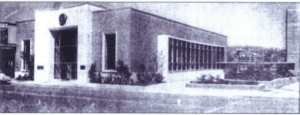
Seattle-First National Bank. Image credit: Construction News Bulletin, 1950.
Here’s the deal—we’re in a pickle: the Seattle-First National Bank Building (SFNB), located at 566 Denny Way in Uptown was designated a Seattle landmark in 2006. Walgreens purchased it after the designation, adapted the former bank into a retail store, and worked with the Landmarks Preservation Board (LPB) to reach a Controls and Incentives (C&I) agreement (in November 2021) that would apply to the site and exterior of the building. The last step in the landmark designation process is City Council approval of the C&I agreement, but we’re concerned Council may reject controls and incentives, thereby leaving the landmark vulnerable to demolition.
We need YOUR Help! Write to City Council before January 3 (ideally by December 23) and demand they honor the Landmarks ordinance and process by adopting controls and incentives for the Seattle-First National Bank building (reference CB 120312). A decision to reject controls and incentives for SFNB puts preservation and landmarking at risk! Contact all Councilmembers by emailing council@seattle.gov.
Context for said “pickle:” until recently, the SFNB has been declared as a building of significance (by virtue of its landmark designation), and a C&I agreement has been signed in which economic incentives are available to the property owner in exchange for committing to maintain the building.
You may recall from our ongoing Showbox advocacy efforts that landmark designation alone does not save buildings – controls and incentives are critical to protecting the places we love. The SFNB, having a designation and C&I agreement signed, means this building is well on its way to being preserved as an asset and public benefit to the City of Seattle. The final step is for the City Council to adopt Council Bill 120312.
OK, great! So, what’s the problem? On Friday, December 9, several members of the City Council’s Neighborhoods, Education, Civil Rights & Culture Committee met and challenged, without documentation or justification, the Seattle-First National Bank building’s landmark designation and the need to place controls and incentives on the building and site.
In advance of the meeting, Seattle City Council Central Staff provided the Committee with a 10-page memorandum detailing the landmarking process and recommendations for next steps. Additionally, the Committee received a joint letter of support for adopting controls and incentives for SFNB from Historic Seattle and the Queen Anne Historical Society.
The Council Committee’s recommendation to reject controls and incentives without reasons relevant to the Landmark Preservation Ordinance and in contradiction to the Landmarks Preservation Board (a group consisting of volunteers appointed by the Mayor and confirmed by City Council) is unprecedented and a major threat to preservation in Seattle and the City’s preservation program.
On Tuesday, January 3, 2023, Seattle City Council will decide whether to adopt the jointly agreed Controls and Incentives for the Seattle-First National Bank building. If rejected, the Council’s decision could undermine the landmark designation process for any designated landmark that doesn’t have controls and possibly any future designated landmarks.
This is NOT OK! Again, we urge you to write to City Council (council@seattle.gov) before January 3 (ideally by December 23) and demand they honor the Landmarks ordinance and process by adopting controls and incentives for the Seattle-First National Bank building (reference CB 120312).
Questions? Contact Eugenia Woo, Historic Seattle’s Director of Preservation Services, at eugeniaw@historicseattle.org.
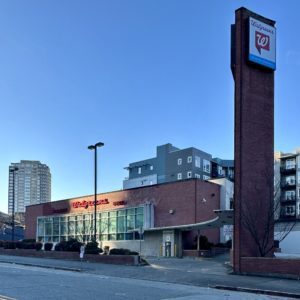
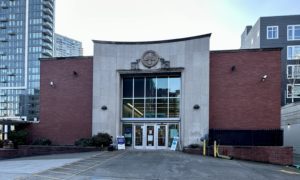
What better way to end this challenging year than by celebrating the people who we’ve seen doing great work in preservation throughout 2021?
We’ve worked with many incredible people throughout the past year, but here are the standouts our staff chose as their favorite People of Preservation in 2021.
Eugenia Woo (Director of Preservation Services)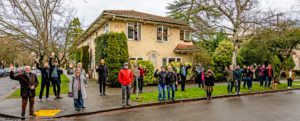
For over a year, I’ve been inspired by the residents and neighbors of the La Quinta Apartments, a Frederick Anhalt-developed, 1920s, courtyard apartment building in Capitol Hill. The long-time owner had passed away; community advocates sounded the alarm about the future of the property early enough so that Historic Seattle could help by sponsoring the landmark nomination prepared by Northwest Vernacular. This place is important not just for its architecture but also for the stories connected to the people associated with the La Quinta for many decades. The advocacy group, called ¡Viva La Quinta!, succeeded in its efforts! The Landmarks Preservation Board designated the La Quinta Apartments and placed controls on the property in 2021. Residents brought their skills to the table by creating a website, designing cool graphics used for effective messaging, tapping their networks to build support for landmarking, and sharing their passion to fight for saving this historic place. Their commitment to save the La Quinta was inspiring.
Jeff Murdock (Preservation Advocacy Manager) 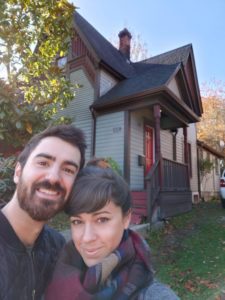
Not knowing exactly what they were getting into, in late 2019 Justin Lemma and his wife Victoria Pinheiro purchased one of the Victorian-era (1893) vernacular houses perched in a row along the east side of the 800 block of 23rd Avenue. Historic Seattle holds a preservation easement on four of the houses, and they are also designated Seattle Landmarks. As such, Historic Seattle and the City weigh in on proposed alterations to ensure the historic character of the buildings is maintained. Justin, an alum of the U.W. College of Built Environments and a Project Designer with Build LLC, was excited to get started on making repairs to the house and only slightly intimidated by the approval process. The ensuing pandemic provided Justin plenty of time at home to do the work. He made repairs to the rotting entry porch, cleaned up the overgrown yard, installed a new paver driveway and replaced the scraggly chain link with a trim cedar fence. They converted the tiny garage at the back of the property into a living space, complete with a bar and small loft, providing space for the couple to work from home in separate spaces. Justin even installed historic windows salvaged from another old house being torn down in the neighborhood. Recently, Justin convinced two more architects from his U.W. Architecture cohort to purchase the house next door, so there is now a community of preservationist architects on this block of 23rd Ave!
Simon Wright (Facilities & Maintenance Manager) 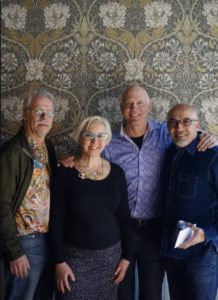
The collective ownership and operation of the Good Arts Building. I’d long admired Cherry Street Coffee’s immaculately painted and maintained façade. Meeting Steve, Jane, Ali, Greg, and Armondo showed me that work was not done just for curb appeal and that the collective ownership has been amazingly successful in collectively restoring, operating and maintaining a historic building for a contemporary use!
Taelore Rhoden (Community Events Manager) 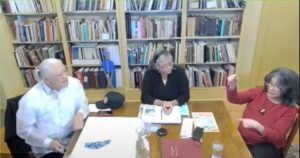
I give all of my flowers to Dorothy Cordova, Cynthia Mejia-Giudici, and Pio De Cano II. These three have been preserving Filipino American history for decades! It was an honor to partner with them and the Filipino American National Historical Society (FANHS) to share the legacy and impact of Seattle’s Filipino American community with hundreds of people (and counting!) this year. Their leadership, camaraderie, and genuine love of people is deeply inspiring and worthy of all of the gold stars.
Cindy Hughes (Council Assistant & GSC Rental Coordinator) 
Leanne Olson is not a newcomer to historic preservation, having received Historic Seattle’s Beth Chave Award for being a “Preservation Champion” in 2018, but she has continued to work tirelessly throughout the pandemic for the preservation of Queen Anne Hill’s historic legacy. The longtime Board member of the Queen Anne Historical Society and the chair of its Landmarks Preservation Committee, Leanne provides an example of a highly effective advocacy approach to preservation through her steady participation in meetings of the City of Seattle’s Landmarks Preservation Board. Additionally, she is my neighbor, and I enjoy running into her on the streets of Queen Anne and chatting about what’s happening on the Hill!
Jane Davies (Director of Finance & Administration)
Hats off to Beneficial State Bank, especially Cynthia Weaver and Stacey Krynsky. They are responsive and personable and truly make banking fun. Their creativity in solving our financial puzzles allows us to nimbly engage in preservation projects. Additionally, they understand our mission of saving meaningful places to foster lively communities by connecting our organization with other groups, creating a preservation-minded network in Seattle.
Danielle Quenell (Office Administrator) 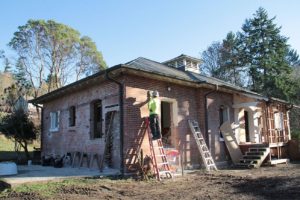
This spring, my partner and I bought a home in the historic Fort Ward district of Bainbridge Island. We quickly realized our new neighborhood was teeming with preservationists, including district commissioner Sarah Lee and the non-profit organization Friends of Fort Ward. Together, they managed to save the historic Fort Ward Parade Grounds in 2002 and have them dedicated as a public park, and most recently restored the 1910 bread bakery into a beautiful community hall.
Naomi West (Director of Philanthropy & Engagement) 
This year, I’ve been awestruck by Stephanie Johnson-Toliver! In 2021 alone, she joined Historic Seattle’s council; became a new HS donor; attended several virtual & in-person programs, our gala, and tours of properties; was a panelist for our Central District History Collective; moderated our conversation with Candacy Taylor; and began working with us to plan a partnership with Black Heritage Society of Washington State. Are you tired just reading that? Reflecting on this year, I recall her concern about her ability to commit enough time to being a part of our leadership. That’s because when she’s in, she’s all in. Her dedication, commitment, and generosity of spirit are remarkable. Thank you for all you are giving to the preservation community, Stephanie!
Kji Kelly (Executive Director)
I have so many favorite individuals and organizations within the preservation community. One individual who has stood out to me, frankly for his entire career, but particularly over the past year is Kevin Daniels. The completion of The Lodge at St. Edward Park is an unbelievable achievement, a terrific example of creativity and sheer determination.
There are some things that are so obvious, they seem silly to state. The Pike Place Market is a Seattle icon. Yeah, we know. Yet, we truly take this for granted. In fact, Seattle’s icon was nearly flattened. It’s only because of the tireless work of community activists that you can enjoy the flower shops, bookstores, restaurants, produce stands, tchotchke vendors, and artist stands that have a home at the Market today.
This month’s VivaCity recognizes those activists who worked to “Keep The Market.” 50 years ago – on November 2, 1971 – the Pike Place Market was saved through a voter initiative. “By the early 1960s, the Market we know today had seen better days. Seattle’s mayor called it a ‘somnolent fire trap.’ Downtown business leaders and property developers were eager to use federal urban renewal fund to ‘renew’ the Market by demolishing it,” as Friends of the Market tells it.
That’s where “Keep The Market” stepped up, to fight a demolition plan and save the Market. Landmarking wouldn’t cut it. Seattle’s Landmarks Preservation Ordinance wasn’t codified until 1973.
So what did they do? “City Councilmember Wing Luke wrote a newspaper op-ed, calling for citizen action to preserve the Market. Architect Victor Steinbrueck and attorney Robert Ashley answered the call. In September 1964, they brought together sixty friends for a champagne breakfast to launch the effort in Lowell’s Café (still in the Market). Architect Fred Bassetti, unable to attend, wrote that the Market was ‘an honest place in a phony time,’” according to Friends of the Market.
The plan was to establish a 9-acre historic district that saved the Market. These days, Seattle has a number of beloved historic districts, but in its time this effort was groundbreaking. The story of the Market is captured in the film “The Market.” Watch it here.
The Market was narrated and produced by Bruce Chapman, who was elected to Seattle’s City Council in 1971. The film notes that activists “ran an initiative campaign to establish a Pike Place Market Historic District. Seattle’s voters passed it by a landslide. It was the first historic district ever created by a public vote, and it was the first historic district officially pledged to retain a place for the poor. It also was one of the first historic districts in America to manage uses of buildings as well as their appearances. It was one of the first successful efforts to incorporate historic preservation into urban renewal.”
We owe a debt of gratitude to the activists who saw a threat to a place they loved and fought to save it, with a vision that has changed preservation in the decades that followed.
And, happy golden anniversary of so many firsts, Seattle! How should we celebrate? The only appropriate way: a stroll through the bustling Market, picking up flowers and having a nice dinner from its iconic small businesses, of course.
For more information:
Read this great piece by The Seattle Times.
Tune in to the re-airings of Labor of Love: Saving Pike Place Market – dates listed here
A Memory of the Future film
Photo credit: Friends of the Market
Last month, Seattle City Light announced “a long-term lease and operating agreement with the newly formed Georgetown Steam Plant Community Development Authority (GTSPCDA), a non-profit organization dedicated to continued public use and restoration of the building. The agreement allows the GTSPCDA to assume programming and operations of the Georgetown Steam Plant, a nationally recognized and historically significant landmark in Seattle’s historic Georgetown neighborhood in the heart of the Duwamish Valley.”
In addition to being the recipient of Historic Seattle 2019 Best in Neighborhood Preservation Award, Sam Farrazaino, as described in the City Light article, “is the lead of the GTSPCDA team and is building on his past successes of redeveloping industrial properties for arts and cultural uses. As founder of Equinox Studios, Sam has championed affordable space for artists and artisans and fostered an engaged relationship with the Georgetown community and beyond.” In this month’s feature, we talked with Sam about plans for this exciting community-centric preservation project
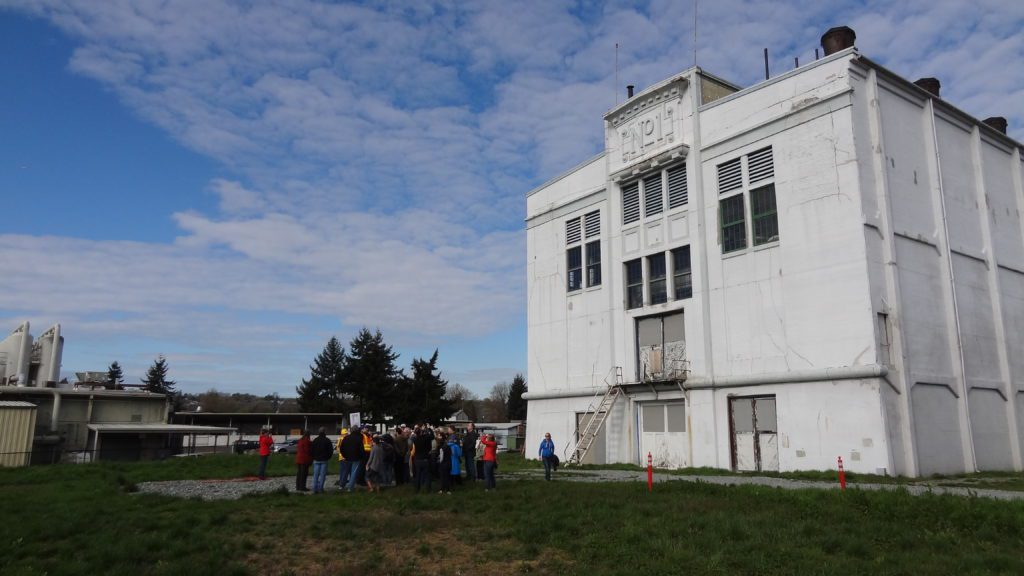
Well, the CDA is intentionally not fully formed yet. The committee that is in place now is only meant to provide the framework for the community to come into, to form, and actually be the CDA. We haven’t formalized bylaws, or the board, or any of those pieces because we want the community to come in and be a part of that process. When we start the community engagement process, we will go through the steps of sort of distilling the large community first, into what we’re calling a Community Programming Team. This group will consist of folks that want to throw their voice into what this building will become. Next, will be the Community Advisory Team, which will consist of people with expertise in certain areas that we can call on and collaborate with for specific things. The final step of that process will be to build the board out of those layers of community. Once we build that board, and have good representation from the community, then we will leave it to the board to write the bylaws and apply for federal status.
What aspects of the GTSCDA’s proposal do you think resulted in the project’s selection during Seattle City Lights request for proposals?
I think the collaborative approach, the fact that we want to partner with City Light and the community, the comprehensive community aspect of things is what really shined and ‘won the bid,’ if you will.
Equinox was born and bred little by little, it’s been an organic process that has been shaped in large part by the people that have come to it. Whether its new people coming to the building, or us reaching out to the public, whether its people throwing their ideas in, their space in, or their money in, all of that engagement informs the evolution of Equinox. It’s in fact why Equinox has evolved. The Steam Plant is interesting because without the community, it is just sitting there, it’s static. Being able to partner with a lot of organizations and enabling them to come in and program there, that will bring the dynamic nature to it, that will bring the life into it. As was the case with Equinox, we first need to make the Steam Plant building safe (stabilizing, fire, seismic, etc.), and get it accessible to as many people as we can with elevators, ADA exits, etc. and then our hope is that over the next 100 years or more the community will really live into the building. It is a National Historic Landmark, and the community here will be the stewards of it, but it is really a national resource, and we really want it to live up to that expectation.

I don’t have a personal history here other than the 26 years or so that I have been coming and going and playing and working in Georgetown. I’m not from here, and I didn’t grow up in a steam plant (haha), but all my life I’ve been drawn to spaces like this. I really love the sculptural, creative, elements of function — the mechanics of industry, gears, turbines, the noise. Mechanical collaboration, this idea of all of the parts and pieces coming together to create whatever you’re creating, is super inspiring to me.
I would LOVE to somehow have a window into when this plant was operating. In fact, we’ve actually been talking to Arts Corps, who is on our team, about creating VR tours where you could step into what it may have been like, maybe feel the heat, hear the noise, and smell the smells. That, to me, would be so awesome!
Getting it right. The biggest challenge is making sure that we have truly authentic community engagement and that we’re being equitable and inclusive in everything that we do — in all of the processes. From selecting contractors and consultants, right down to the day-to-day use of the plant. We are not just trying to check boxes, we are actually trying to get as deep down into the community as we can and that takes time, energy, space, and money. One of our team member’s mantras is “moving at the speed of trust.” This means getting the community to that level where they trust the organization, trust the project, and really feel like they are an authentic part of it. It’s about making sure that this is really a community-driven and community-used resource and asset. Our goal is really getting that right.
The second biggest challenge is probably the money. Getting to the $20M we need (this is our working figure) will be a huge lift financially.
The last part is figuring out the actual details of things. Like, ‘how do we incorporate seismic bracing, fire sprinklers, elevators, and life safety things into the building? How do we weave that into the structure in a way that honors its history and makes sense?’ It’s a big puzzle and a matter of figuring out how to fit the pieces together.
The pandemic is definitely a factor in that, how do we actually do the community engagement part in the midst of all of this. We are in the process of reaching out to the organizations we are involved with to determine how we outreach. How do we ensure we reach enough of the community? We have started seeking bids and permitting, etc., for some of the necessary physical upgrades, so that is exciting. Hopefully by February we’ll have enough of the other parts (life safety, etc.) in place so that when we launch community engagement piece, we have this vessel (the plant) and the framework ready. The question then becomes, “what do we (the community) want to do with this?”
From the actual day-to-day-ness of it. What the team has envisioned is for the plant to be open to the public every day, for people to experience it in that museum sense, dig into some of its history, and be inspired by it. Another part of the vision of the plant is as a daily educational facility, where people can learn in and from an inspiring space, and where people and partner organizations can bring kids of all ages in and program there. On the event side of it, it’s about bringing the community in in different ways. Whether it’s centered around celebration – like a wedding or a nonprofit gala — or it’s a community meeting, having the community really see themselves in this space is what we want to create. It’s about that invitation to have the community own this, to really hold it, and then activate it.
Situated on a hilltop in Wallingford on a lot once surrounded by fruit orchards is the Historic Seattle-owned Good Shepherd Center (GSC). Today, the GSC is a vital multi-purpose community center housing a senior center, six live/work units for artists, a rehearsal and performance space, various schools, local and international non-profit organizations, and several small businesses that all together (in “normal” times) attract an estimated 125,000 visitors annually.
Originally built in 1906 as the Home of the Good Shepherd, the Sisters of the Good Shepherd occupied the building and grounds for over 60 years, providing shelter, education, and training to young women and printing and laundry services to local industries such as The Great Northern and Northern Pacific Railroads. After the Home of the Good Shepherd closed in the ’70s, the Wallingford community fought and defeated a proposal to turn the 11-acre site into a shopping center and the City of Seattle purchased the property in 1975. The building was then transferred to Historic Seattle for use as a community center. For over 40 years, Historic Seattle has since worked continuously to honor its past and further its legacy as a place full of vitality where community can thrive.
Of course, the story of the Good Shepherd Center continues to evolve, and this month part of that evolution is the introduction of our newest GSC tenant — the Seattle Genealogical Society! This month, we talked to Jim Secan, the genealogical society’s current president. Below are Jim’s responses to questions we asked about the work of the society and changes that are underway as they make their move into the GSC and prepare for their upcoming centennial and the next 100 years.
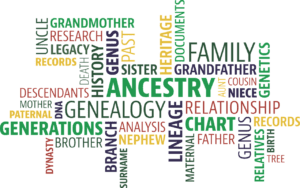
What is the Seattle Genealogical Society?
Our mission is two-fold. One, we have taken on the mission of collecting and preserving materials that are of interest historically, primarily, in a genealogical sense. Genealogy is a specialized history — it’s the history of the “little man,” so to speak. We look not just at what the Dennys, Terrys, Doc Maynards, and “so and sos” of Seattle did, but at what the ‘Bill Smiths’ and such did. An not only in the 1880s, but also for the future’s sake, in 2010. We are in the business of preservation of community. We preserve the documents that community have made over the years documenting its history – everything from tax records, birth certificates, marriage certificates, death certificates — anything that documents someone doing something. We are preserving the paperwork and now the digital works, that a community collects over the years.
The second part of our mission is to provide education to our membership. We are in a similar kind of business (as Historic Seattle). We educate on the parts of history that we deal with, just like you deal with education on the parts of history you deal with. This is particularly important these days when it goes beyond teaching people how to do research in a musty old library. Now, the question is also, “How do you do research on the internet? How do you work with digital materials?” And “How do we best preserve these materials so that they are most accessible?”
Why move to the Good Shepherd Center? What are your plans for the next 100 years?
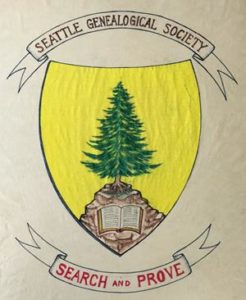
We’re coming up on our centennial in 2023, and so we are asking ourselves, “What do we need to look like to prepare for the next 100 years?” As part of that, we decided we would relocate. We were looking for a place that would energize our base and energize ourselves. This has been an opportunity for us to look at everything with a critical eye and ask, “Is this something that is key and core to our mission?”
And while the space is smaller than our previous home, it fits into our plans to downsize our library and move away from the books and paper genealogy of our past and to force ourselves to move into a more digitally oriented future. With this pandemic, we have really had to look at how we go about the education portion of our mission because until recently that had primarily been done in person. We are also asking ourselves where we fit in to the larger genealogy educational programs. “What holes are there, and what opportunities are there in this this time that has been so impacted by the pandemic?”
How to interest younger generations in genealogy has also been a big topic of discussion. Many of the people we are trying to attract to genealogy are more interested in accessing things digitally and online. Of course, we are still going to have books and papers, but we are narrowing our collection to focus only on the Pacific Northwest, and items that are unique to our collection. As well, as a society we are moving away from traditional definition of a family which prompts us to ask, “What kind of a program can we set up that would provide the tools for young people wanting to get into this kind of research without imposing barriers of any kind?” We want to go there, but we want to go there with great care.
The Good Shepherd Center, you walk up to the building and think, “How could you NOT love this place!” This is a move into a building that is not only beautiful, but also has a long history. Longer than ours in fact. We are excited to connect and collaborate with Historic Seattle, as well as others both in the building and in the surrounding community. We were originally based in the main Seattle Public Library building downtown; this will be our fifth location since being in the library, and it feels like coming home.
Visit https://seagensoc.org/ to learn more or get involved with the Seattle Genealogical Society. To learn more about the GSC’s history, check out Good Shepherd Center Garden History Tour, part of Historic Seattle’s Preservation Station video series on YouTube. Interested in experiencing the Good Shepherd Center in person and tasting this year’s heirloom apple harvest? Join us for our 7th Annual Heirloom Apple Event on Thursday, October 14, 2021!